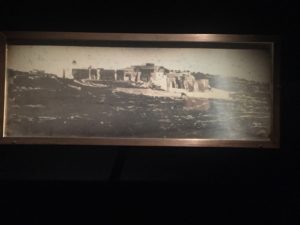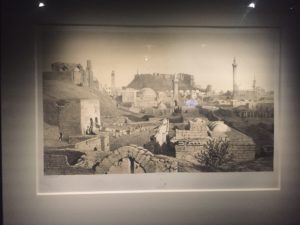 The importance of cataloging art has been recognized by government agencies, academics, art preservation organizations, art market professionals, and art collectors. Its significance is recognized for various reasons. First, maintaining a record of art and archaeology adds to the historical information available to the public. This record contributes to our understanding the state of preservation and authenticity of sites and objects. Second, these records assist in developing the provenance (ownership history) of objects. In the instance that a work of fine art is stolen, ownership can be proven and the work can be traced by to the rightful owner. This record also prevents the sale and misattribution of forged works. And in the instance that an object or piece of an historical site was illicitly removed, a catalog can be used to pinpoint the provenience (find spot) of a piece or demonstrate the time of its removal. (This is important in terms of patrimony laws and international laws regulating antiquities.) Finally, a catalog assists in developing the historic significance of sites and objects and provides a deeper understanding of how these sites evolved over time and objects were purchased by collectors.
The importance of cataloging art has been recognized by government agencies, academics, art preservation organizations, art market professionals, and art collectors. Its significance is recognized for various reasons. First, maintaining a record of art and archaeology adds to the historical information available to the public. This record contributes to our understanding the state of preservation and authenticity of sites and objects. Second, these records assist in developing the provenance (ownership history) of objects. In the instance that a work of fine art is stolen, ownership can be proven and the work can be traced by to the rightful owner. This record also prevents the sale and misattribution of forged works. And in the instance that an object or piece of an historical site was illicitly removed, a catalog can be used to pinpoint the provenience (find spot) of a piece or demonstrate the time of its removal. (This is important in terms of patrimony laws and international laws regulating antiquities.) Finally, a catalog assists in developing the historic significance of sites and objects and provides a deeper understanding of how these sites evolved over time and objects were purchased by collectors.
The ease with which fine art may be cataloged is starkly different than the way in which antiquities are recorded. Historical pieces may not have been discovered through government-sanctioned excavations. Objects looted from the ground have no paper trail. They may have gone unseen for perhaps millennia, making it impossible to catalog them prior to excavation. Needless to say, people involved in the trafficking of looted antiquities do not maintain an honest or accurate account of an object’s removal. Some dealers intentionally attach false information about these objects to avoid repatriation demands from governments.
However, objects that are legally uncovered or removed during official excavations are accurately recorded. Photographic records of sites provide us with a great deal of information about legal excavations, illicit treasure hunting, and a site’s transformation over time. In some cases, sites have been strictly protected while surrounding landscapes have changed (for example, the area surrounding Colosseum has dramatically changed over the past century). In other cases, sites have been destroyed.
Throughout the history of archaeology, the visual record of sites has included archaeological drawings and, more recently, photography. On view at the Metropolitan Museum of Art is a fantastic exhibition that provides a glimpse at photographic archives, particularly in regions that have been heavily looted or destroyed by conflict. In Monumental Journey: Daguerreotypes of Girault de Prangey, an incredible collection of images from the Middle East are on view, including an extension collection of images from Syria, Egypt, and the Israel. The exhibition presents images from Girault’s three-year photographic expedition through the Eastern Mediterranean.

Wall text: “The renowned square minaret of the Umayyad Mosque (seen in the center of the larger image) collapsed in 2013 as conflict intensified during the Syrian Civil War”
Some of the most powerful images in the exhibition include photographs from Syria. They are intriguing not just for their beauty and intricacies, but because it is no longer possible to see those places. In two images, the city of Aleppo is majestically laid out across landscapes that includes arches, minarets, and beautiful ruins. Sadly, that cityscape no longer exists because it was heavily destroyed during the nation’s ongoing civil war. The Met provides background for these photos by stating that the city was once one of the most important trading cities in the Levant, and that the recognizable minaret of the Umayyad Mosque was obliterated in 2013 during conflict.
Similarly, the exhibit includes a photograph of Bethlehem’s Church of the Nativity and Convents. The city was damaged by earthquakes in the 19th century, and the church was later looted and fell into disrepair. The church now appears on UNESCO’s List of World Heritage in Danger. Girault’s photograph is an escape to another time and an opportunity to view the site prior to its plunder.
Interestingly, the exhibition notes that Girault was also a collector of antiquities, and the exhibit includes an Egyptian stela that was acquired by the photographer during his travels. Sadly, the exhibition notes that travelers amassed antiquities collections by purchasing archaeological treasures by local authorities.